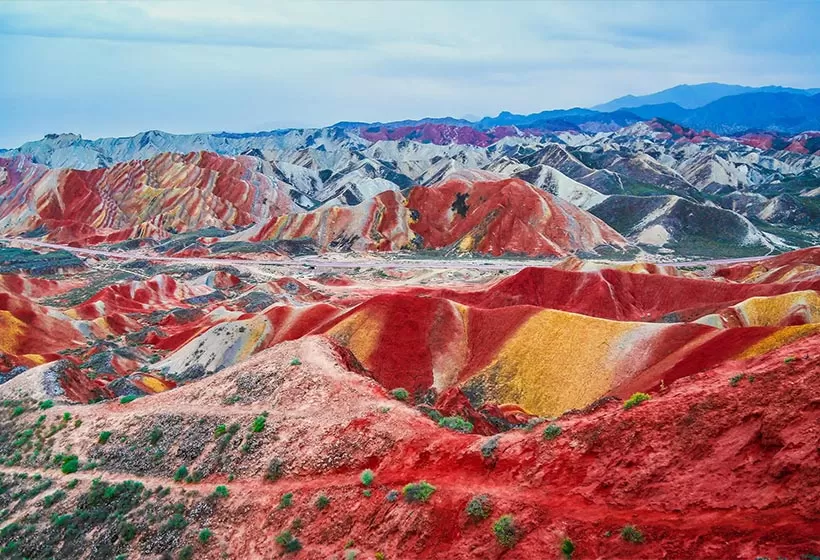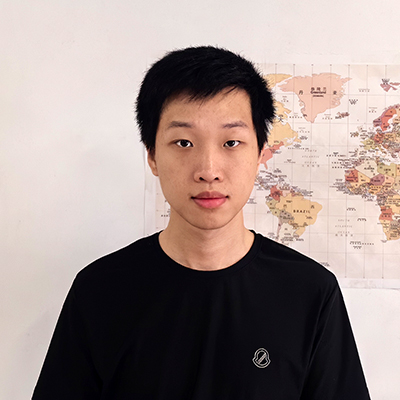Short Introduction to Zhangye Local Culture: History, Diet, Ethnic, etc.
Zhangye, formerly known as Ganzhou, is located in the middle section of the Hexi Corridor and has historically been a bustling commercial hub along the Silk Road. It is often referred to as the "Jiangnan of the Frontier" due to its scenic beauty and favorable climate. Zhangye boasts a long history, rich culture, stunning landscapes, and simple, sincere people, making it a dazzling gem along the ancient Silk Road. For thousands of years, the region has been prosperous and thriving, earning the nickname "Golden Zhangye".
Brief History
Archaeological evidence indicates that human activity in Zhangye dates back over 5,000 years.
During the early Western Han Dynasty, Zhangye was part of the Xiongnu territory. In 121 BC, General Huo Qubing led an army into Hexi, and the Xiongnu submitted to the Han Dynasty. In 111 BC, the Zhangye (Armpit-Stretching) Prefecture was established, named for "stretching the country’s armpit and blocking the Xiongnu's right arm to open a route to the Western Regions".
During the Northern and Southern Dynasties, the Northern Liang dynasty was established in Zhangye by Juqu Mengxun. Since then, Zhangye culture showed unprecedented prosperity, became the center of northern Chinese Buddhism and served as a key intermediary for trade and diplomatic exchanges between China and the Western Regions. In 554 AD, due to the Ganquan spring in the region, Zhangye was renamed Ganzhou.
During the Tang Dynasty, the international trade status of Hexi reached an all-time high. In 781 AD, after Hexi was occupied by the Tubo Empire, two military districts, Wuwei and Dunhuang, were established, and Ganzhou came under the jurisdiction of Wuwei.
In the Five Dynasties period, Ganzhou was inhabited by the Uighurs. In 1028, during the Northern Song Dynasty, the leader of the Tangut people, Li Yuanhao, defeated the Uighurs in Ganzhou and established the Western Xia Dynasty. The dynasty continued the traditions of Han culture, invested in irrigation, developed agriculture, promoted education, and upheld Buddhism and Daoism, building the Dafo Temple.
During the Yuan Dynasty, Gansu Province was established, with Zhangye as its capital. The Italian explorer Marco Polo, on his journey to Shangdu, stayed in Ganzhou for a year and described Zhangye’s prosperity, the scale of its city, and the grandeur of its religious temples in his Travels of Marco Polo.
In the Qing Dynasty, Zhangye County was established as the administrative center of Ganzhou Prefecture. The Qing Dynasty's military operations in the western regions were coordinated from Ganzhou.
In March 2002, Zhangye was upgraded to a prefecture-level city, and the original County-level Zhangye City was renamed Ganzhou District.
Religious Belief
Historically, Zhangye has been a region of diverse religions and sects, with Islam, Buddhism, Taoism, Catholicism, and Christianity all being present. Taoism and Buddhism began spreading in the Hexi Corridor during the late Eastern Han Dynasty, while Islam was introduced to the region during the Song Dynasty through the Silk Road. By the Yuan Dynasty, Zhangye had established a Catholic church, and in the second half of the 19th century, Christianity also spread to northwest China.
Zhangye Dafo Temple is one of the largest, oldest, and most culturally rich Buddhist temples in the Hexi Corridor. The eaves of the main hall are adorned with carvings of dragons, lions, tigers, deer, and elephants, all vividly and realistically depicted. On either side of the main entrance, there are exquisite brick carvings. The left side depicts " Lecture in Gion", while the right side shows the "Western Sacred Site". The carvings are finely detailed and magnificent, representing an outstanding example of brick carving art.
According to local statistics, among the religious population in Zhangye today, Buddhism is the most widely practiced, followed by Islam, Catholicism, and Christianity, while Confucianism and Taoism are also prevalent in the community.
Zhangye's culture, shaped by centuries of change, integration, and interaction, carries deep regional imprints. As a result, Zhangye culture has evolved into a multi-dimensional culture, primarily centered around the integration of Confucian and Buddhist traditions, with Taoism, Catholicism, and Christianity serving as complementary influences, all of which contribute to its unique regional characteristics.
Ethnic Culture
The Yugur people primarily reside in the Sunan Yugur Autonomous County of Zhangye, and are one of the three unique ethnic minorities in Gansu Province. Today, the Yugur people are mainly descendants of the ancient Uighurs, specifically the Yellow-headed Uighurs, and have integrated elements from Mongolian, Tibetan, and other ethnic groups.
The Yugur people of the grasslands are not only warm and hospitable but also place great importance on rituals and etiquette. Through their long history of nomadic life, they have developed a comprehensive set of traditional customs and social rules. From an early age, children are taught to respect these customs, which fosters a society characterized by respect for elders and orderliness. The uncle holds a highly revered position in the lives of the Yugur people, and the opinions of the uncle are regarded as paramount in family matters, regardless of their size. When the Yugur people meet each other, they first dismount and exchange greetings, and it is customary to offer each other a snuffbox as a sign of respect.
Yugur clothing customs are intricate, colorful, and unique, reflecting the wisdom and creativity of the Yugur people. In terms of accessories, Yugur men typically wear a waist belt, to which they attach a knife, smoking pipe, wine bottle, and snuffbox. The most treasured snuffboxes among the Yugur people are made from materials like agate, crystal, jade, and coral. These snuffboxes are often kept inside beautifully embroidered pouches, which are worn on the chest and fastened to the clothing.
In the wedding ceremonies of the Yugur people, there are rich rituals and customs, with a total of 28 steps spread over three days. The Yugur also have informal marriage forms, a ritual performed when a girl reaches a certain age. This ceremony marks her coming-of-age and signifies that she has gained social freedom.
Diet Style
Zhangye has earned the "golden" title in the Hexi region, also due to its rich variety of affordable and delicious local dishes, which have gained a good reputation throughout the northwest. Zhangye cuisine, with traditional northwest dishes as the foundation, integrates Sichuan and Northeast China cuisine, creating a distinct local flavor.
Zhangye is fertile of wheat, hence wheaten food is a staple. In Zhangye, a simple dough can take on numerous forms. When stretched, it becomes "long noodles"; when diced, it turns into "xiaofan"; rubbed, it becomes "Cuoyu noodles"; flattened, it is called "leaf noodles"; brown, known as "barley noodles", and green, made into “spinach noodles”. In Zhangye, noodles come in thousands of shapes, pushing the boundaries of creativity, that seems the local people’s unparalleled love for life.
The love for meat in Zhangye has a deep historical connection to warfare. In ancient times, the people of Zhangye had to fight for grazing lands and defend their territory, requiring strength and power. This resulted in the development of a practical, war-oriented food culture—dishes that could be made quickly, consumed quickly, and kept people full for long periods without hunger. This tradition has persisted, and today, the people of Zhangye still favor beef and lamb, which have become the local food hallmark, often consumed as a main dish.
With the diversification of crops, the food structure in Zhangye has evolved. While wheat and meat remained the mainstay, rice, vegetables, and other foods became more common, and various cooking methods emerged. By the late Ming dynasty, some snacks took place, many of which are still popular today.
Cultural Heritage
Zhangye is a key city along the ancient Silk Road, home to numerous historical and cultural relics of the Silk Road. The Shandan Dafo Temple is the largest remaining Buddhist hall of the Western Xia Dynasty in China and is famous for housing the largest reclining Buddha in Asia. Mati Temple, known as the birthplace of Zhangye's tourism development, is not only scenic but also rich in ethnic cultural charm, making it one of the city’s major tourist attractions. The Wenshu Temple at the foot of the Qilian Mountains is a magnificent and mysterious sight, often referred to as the "New West".
Moreover, Zhangye is home to several ancient towns and cities, such as Yulan Ancient Town, Heishui Kingdom Ancient City, and Camel Ancient City. Although their former grandeur has faded, the historical ruins still offer a glimpse into the glorious past of Zhangye.
The intangible cultural heritage of Zhangye is also worth mentioning. The ancient-like Shandan soldering painting, the rustic and bold Linze clay sculptures, and the vibrant and colorful Yugu ethnic costumes carry not only memories and history, but also emotions and the cultural continuity of the region.
Customize Your Unique Golden Zhangye Trip

If you are interested in one of the Zhangye itineraries mentioned above, please contact us, and we will be happy to customize it and provide a quote tailored to your preferences.
Alternatively, if you would like to customize your Zhangye Tour, please visit our Zhangye Tour Customized Center. We assure you that you will receive a reply within 24 working hours.
Informative Articles for Your Zhangye Trip
 the ancient Silk Road
the ancient Silk Road- Travel Guide: attractions, weather, hotels, food, etc.
- Top destinations: best places to visit in Zhangye
- Travel itineraries: itineraries for your reference
- Local culture: brief history, folk culture, festivals, etc.
- Weather: the best time and seasons to visit Zhangye
- Top attractions: sightseeings to watch in Zhangye
- Unique perspective: best interesting things to do
- Local food: what to eat while traveling in Zhangye
- Luxury hotels: accommodation to stay in Zhangye
- Lanzhou Tours: customized tours for your reference
GREAT FAMILY CHINA TOUR
JULY 2024 We wanted to thank Grace at China Culture tour for organizing a great tour of China. We enjoyed our Beijing - Xian-Chengdu -Guilin -Yangshuo - Shanghai trip. Our local guides Bruce in Beijing, Susan in Xian, Jane in Chengdu, Mike in Guilin and Mary in Shanghai took care of us…read more details »
Teng Han L from SINGAPORE
Ready to Create a Unique Dream Travel?

